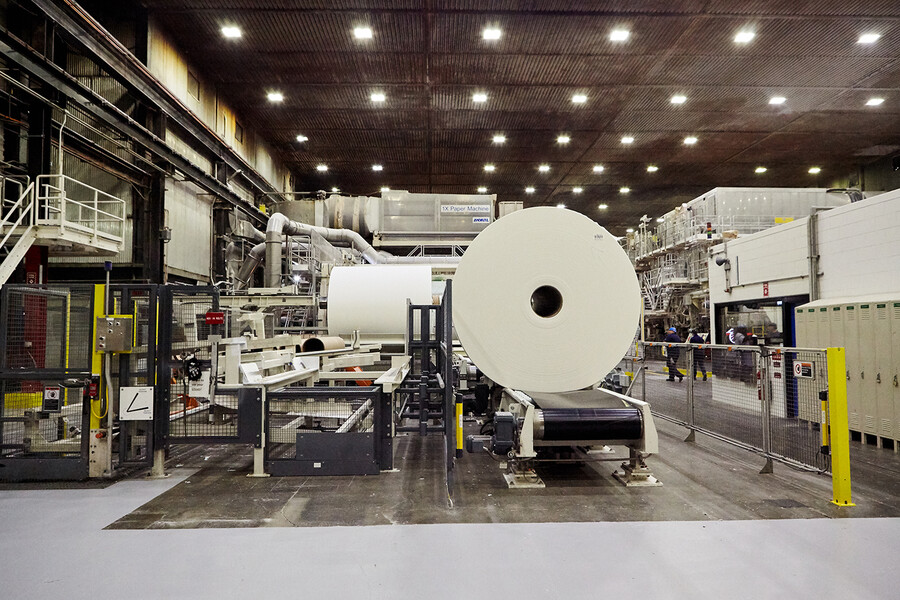Embracing Sustainable Tissue Production
Procter & Gamble’s Certified Forester Shares Insights
Sustainable practices are a top priority for the paper industry. From the fibers and water used to reductions in greenhouse gas emissions.
One of the ways the industry puts responsibility first is through how we manufacture tissue products like paper towels and toilet paper.
We dove into how the industry is embracing sustainable production and got an insight into how one company, Procter & Gamble, approaches it.
How Are Toilet Paper and Paper Towels Made?
In the industry, toilet paper and paper towels are made using:
AF&PA members adhere to sustainable fiber procurement principles. Procurement is how our members get the wood they need to make the products people rely on.
In 2022, AF&PA members procured 98.9% of the total wood fiber from forests that was used to manufacture products through a certified fiber sourcing program.
Recycled paper and wood pulp help tissue manufacturers deliver different attributes depending on customer preferences such as:
- Ultra-softness
- Absorbency
- Strength
- Recycled content
- Budget

Photo: Procter & Gamble
Chris Reeves, Director and Certified Forester at Procter & Gamble (P&G), explained how wood pulp is turned into facial tissues, toilet paper or paper towels.
“The fibers are mixed with water and that mixture is then poured onto a belt to form a sheet,” he said. “Once dried, the sheet is rolled into a large roll, which is then converted into the smaller rolls you are familiar with.”
How Are Tissue Products Like Toilet Paper and Paper Towels Sustainable?
Tissue products are made from renewable resources. The fiber used to manufacture these products comes from managed, working forests where trees are replanted on a continuous cycle.
Sustainable forest management is critical for the future of our nation’s forests. Healthy, managed forests support biodiversity while protecting forestland from disease, insect infestations, invasive species, and wildfires.
Reeves gave insight into how P&G helps ensure forests are protected.
“P&G only sources our wood pulp from responsibly managed forests that are 100% third-party certified and require reforestation after harvesting. For our family care products like toilet paper, two trees are regrown for every tree used,” Reeves explained. “We are committed to respecting the rights of Indigenous peoples and protecting biodiversity.”
P&G also goes beyond its supply chain by partnering with the Arbor Day Foundation to plant 1 million trees between 2020 and 2025. “This helps fund forest replenishment in areas devastated by natural disasters like wildfires,” he said.
Some AF&PA members also use recycled paper to make toilet paper and paper towels. In fact, 90% of U.S. tissue manufacturers use recycled paper to make new products. The way P&G uses recycled fibers is in the paper cores their products are wrapped around.
How Are Tissue Products Helping Promote Sustainable Forests?
AF&PA members source trees from working forests, the majority of which are privately owned and have been around for generations. Responsible stewardship is crucial to the current health and future of a working forest.
Landowners, foresters, engineers, scientists, biologists, harvest managers and more work together to maintain these forests through long-term planning. That includes planning harvests and planting seedlings to continue the cycle.
Reeves, a certified forester, explained how foresters approach forest management with science.
“Working forests are managed in a thoughtful, scientific way that mimics nature and builds resiliency,” Reeves said. “Foresters use management tactics that help maximize the trees’ ability to store carbon, and reduce the risk of wildfires and bug infestations.”
How is the Paper Industry Leading on Sustainable Forestry?
As a condition of membership, AF&PA members are committed to sustainable forest management and sourcing wood from responsibly managed forests.
In 2022, AF&PA members procured 98.9% of the total wood fiber from forests that was used to manufacture products through a certified fiber sourcing program.

AF&PA has a new 2030 sustainability goal to advance more resilient U.S. forests. It’s part of our Better Practices, Better Planet 2030: Sustainable Products for a Sustainable Future initiative. We’re doing this through:
- Supporting conservation and restoration programs and initiatives
- Engaging in partnerships and investing in research, outreach and education
- Promoting sustainable forest management practices
- Committing to increased supply chain transparency regarding responsible sourcing.
Reeves shared one of the ways P&G is working toward the industry’s 2030 goal.
"At P&G, we are continually increasing acres of working forests that are certified by third-party organizations such as the Forest Stewardship Council™ (FSC).
We do this by working directly with suppliers and their supply chain to get small landowners certified, sponsoring group certificates through FSC, and participating in coalitions and programs that spread awareness and reduce the barriers to certification," Reeves said.
As part of Better Practices, Better Planet 2030, AF&PA members will continue their commitment to procure wood fiber through certified sourcing.
